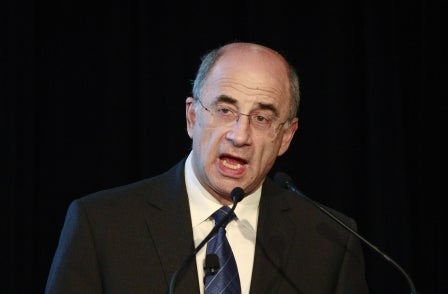
A report has criticised the national press for repeatedly claiming that the Leveson Report and subsequent all-party Royal Charter on press regulation represent a threat to press freedom without citing evidence.
The Media Standards Trust looked at stories published in 18 daily and Sunday newspapers (with The Sun titles considered together) – excluding the i, FT Weekend, Evening Standard and Metro – over the 12 months after the publication of the Leveson Report.
It found that 2,047 articles were written about press regulation in this period – an average of 5.6 a day, compared with an average of four a day between July 2011 and November 2012.
The above tables, from the MST report, show the number of stories written about press regulation between November 2012 and November 2013
The MST searched ten main terms to find these news stories, features, editorials and opinion pieces: ‘Leveson’, ‘Royal Charter’, ‘Privy Council’, ‘Independent Press Standards Organisation’, ‘IPSO’, ‘Press Standards Board of Finance’, ‘Pressbof’, ‘Hacked Off’, ‘press regulation’ and ‘press laws’.
It was found that 69.4 per cent of the articles were “evaluative”, with 58.8 per cent of these said to be negative and 15.3 per cent positive.
This table shows the number of press regulation articles published in the national press between November 2012 and November 2013, with The Guardian publishing the most and the Daily Star Sunday the least
This table breaks down the press regulation articles into news stories, features, leader columns and opinion pieces
The research found that the Daily Mail’s articles were predominantly negative, with a ratio of 33 negative stories to one positive with regards to Leveson and the Royal Charter. The Sun’s ratio was 29 to one.
These tables show the proportions of press regulation articles per newspaper considered to be negative, positive, both or none
In the 12-month period, the MST found that 66.7 per cent of news articles and 43.8 per cent of features contained “evaluative viewpoints” on Leveson or the Royal Charter.
Separately, it was found that 862 (42.1 per cent) of the 2,047 articles studied used the argument that Leveson or the cross-party Royal Charter pose a threat to press freedom.
“The claim that press freedom was being threatened was often presented with no supporting evidence, no counter-argument, and without a quote by an identified source,” the report says, adding that less than 30 per cent of these included specific evidence, and 14.8 per cent contained a counter-argument.
“The language used to describe Leveson and the Cross-Party Charter was emotive, repetitive and focused on freedom and government interference.
“There were hundreds of references to ‘press freedom’ in newspaper coverahe of press regulation, and to ‘shackles’, ‘muzzles’, and ‘curbs’ on the press.
“Certain phrases were repeated across news and opinion articles, and several newspapers, indicating a lack of plurality in the presentation of press regulation.
“Opinion came increasingly to be presented as fact, crossing the divide from ‘leader’ and ‘opinion’ articles, to factual news articles, and there was evidence of arguments being replicated word-for-word across comment pieces.”
Email pged@pressgazette.co.uk to point out mistakes, provide story tips or send in a letter for publication on our "Letters Page" blog
